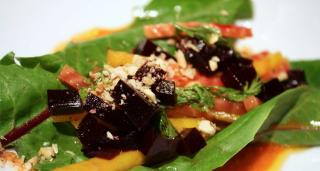

Dandelion is a plant that grows in the wild in most fields, pastures, and gardens of course.
A summary of key dandelion facts
Name – Taraxacum officinalis
Family – Asteraceae
Type – perennial
Height – 4 to 6 inches (10 to 15 cm)
Exposure – full sun, part sun
Soil – ordinary
Harvest – 10 to 12 months after sowing
Even though it is considered a weed, it can actually be grown and eaten in salad, both leaf and flower.
Read also:
Dandelion can be sown right as spring starts, ideally after any risk of freezing has disappeared.
Dandelion can thus be sown from March to July.
After sprouting:
Dandelion requires extremely little care, it is much more famous for its hardiness and vigor than it is for being weak and frail…
You can run the hoe along often to remove the true weeds that might alter the proper growth of your dandelions.
Blanching dandelion means covering the plants to cut them off from light for a while, to reduce the bitterness of their leaves.
It’s possible to blanch the dandelion by covering it with an opaque garden cloche, a wooden box, empty flower pot or an opaque sheet of plastic.
It you don’t have any of this, simply pile up some straw or dried leaves on the dandelion should be enough to blanch it.
It is recommended to cut all the dandelion leaves 1 inch (3 cm) from the crown and ridge each plant with a thick layer of soil, about 4 to 6 inches (10 to 15 cm).
For the dandelion, one can harvest leaves, flowers and even the root. Nothing in the dandelion goes to waste!
Dandelion leaves are most delicious in spring, while they are still young, for use raw or in mixed salads.
When cooking the leaves, you can harvest anytime during the year.
Harvest dandelion flowers in spring when the inflorescence is well formed.
Cut the capitulum, breaking off the small stem with a sharp pull.
You can used it to decorate both mixed salads and desserts, and cook it to make delicious dandelion jelly.

The leaves and the roots of dandelion are both edible.
Flowers can bring a surprising decorative touch thanks to their golden yellow color, and they are simply delicious when added to jelly and jam.